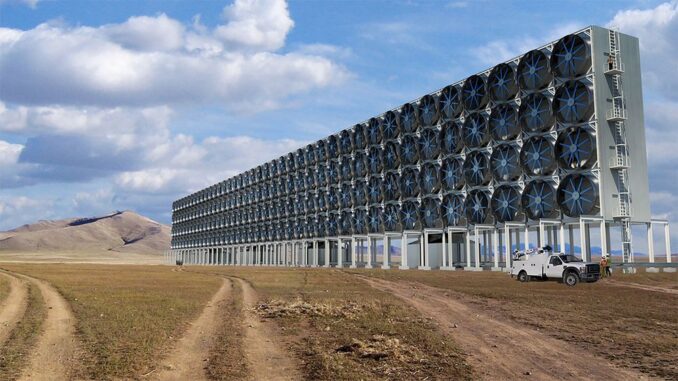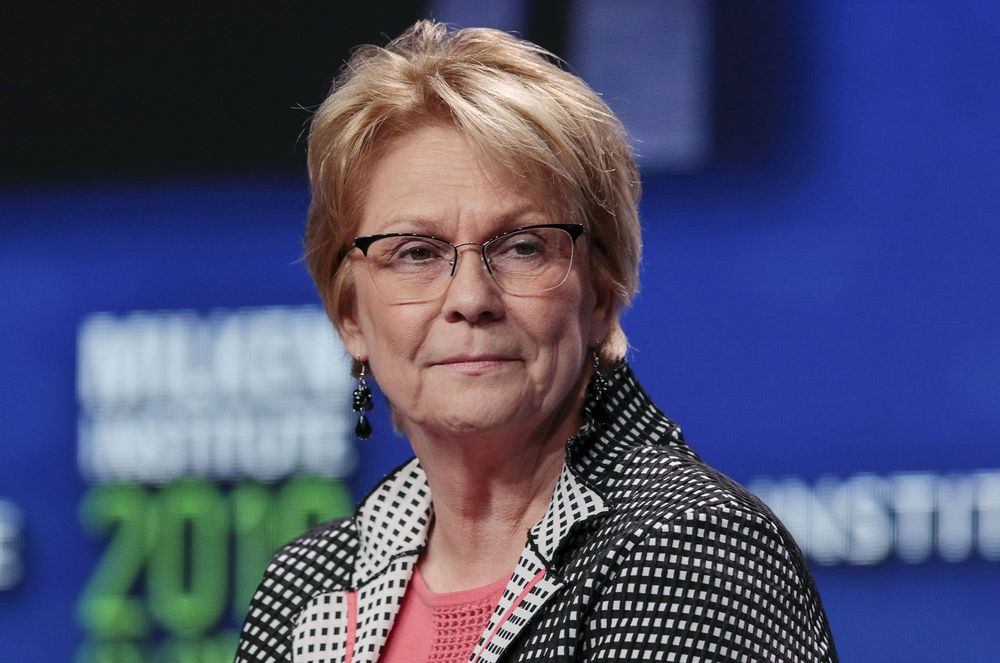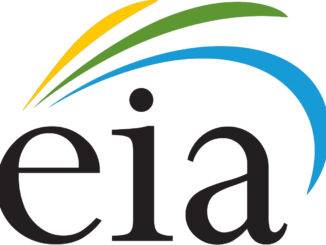
Deep in the Permian Basin, America’s biggest oilfield, Occidental Petroleum Corp. plans to build a facility that it believes could change the way the world thinks about fossil-fuel emissions. The globe’s first large-scale direct air capture (DAC) plant will remove carbon dioxide from the atmosphere and pump it deep underground, where it will remain for millions of years. The process would essentially be the reverse of what oil and gas companies do today. The goal is to lower emissions of the primary greenhouse gas responsible for global warming—and one day even produce a carbon-negative barrel of oil.
But to cover the cost of operating the plant, Occidental will initially use much of the CO2 to push out lucrative oil from underground reservoirs, thereby replacing one pollutant with another. The facility, expected to cost hundreds of millions of dollars, will also need support from tax credits and outside investors to be financially viable.
The climate crisis has increasingly found its way to the boardrooms of the world’s largest oil companies, which many environmentalists say are to blame not only for pumping emissions into the air but also for spreading misinformation on the consequences of doing so. Some, such as BP Plc, have responded by plowing money into renewable energy. Others, such as Exxon Mobil Corp., are doubling down on fossil fuels.

Occidental wants to take a different approach and become a “carbon management company,” says Chief Executive Officer Vicki Hollub. “We are not afraid of the transition out of oil and gas, because we’re a part of that transition. I do believe that in 15 to 20 years, more of our income will be from carbon management than from oil and gas.”
Climate scientists have long considered carbon capture as essential in meeting climate goals, but high costs have slowed adoption of the process. Efforts have been limited to siphoning off concentrated streams of CO2 from industrial facilities and burying them underground at two dozen plants around the world. Occidental’s plant, which it aims to have operating by 2023, changes the model because it takes CO2 directly from the air, allowing the facility to be built anywhere.
The plant will be designed to capture as much as 1 million tons of carbon dioxide a year, equivalent to the emissions from about 215,000 cars, or a quarter of what a coal power plant produces.
Direct Air Capture
The process makes oil production potentially carbon-neutral by removing CO2 from the atmosphere, then using it to free underground oil
Data: Carbon Engineering
DAC works by sifting air through chemicals that can selectively pull out CO2, like iron filings to a magnet. Since CO2 makes up only 0.04% of the atmosphere, a huge amount of air has to be filtered to capture it in large quantities. It can cost as much as $600 to capture each ton of CO2 with some DAC methods.
Occidental is betting the technology will become cheaper as more DAC plants are built, allowing engineers to learn how to optimize the hundreds of tiny steps required to make the complex projects work more efficiently. Such green energy cost reductions previously occurred with solar panels and wind turbines.
The company will license the DAC technology from Carbon Engineering, a Canadian startup that counts Occidental, Chevron Corp., and Bill Gates among its investors. “It’s not a technology that’s a trial-and-error type of thing; you know it will work,” Hollub says. “We need to just get it to scale.”
If DAC becomes substantially cheaper than it is now, it could be revolutionary. To drive down costs, Occidental wants to use the CO2 it captures in its enhanced oil recovery business, where the gas is pumped into older wells to infiltrate rock and acts like soap to release crude. Being able to build an air capture plant close to its extensive Permian operations would eliminate the costly need of transporting CO2 to its enhanced recovery wells.
The technology is key to helping Occidental achieve its goal of becoming carbon-neutral by 2050. And it will lower the cost of its enhanced oil recovery business and provide returns similar to those at its lucrative Permian operations.

Although the net effect will be cleaner crude, and perhaps even carbon-negative (when more carbon is put in the ground than will be produced when the oil it helped extract is burned), it’s still a hard sell to environmentalists, who blame the climate crisis in large part on oil companies that sowed doubt about the science. Some climate activists also question the U.S. government’s allowance of tax credits for making the technology more affordable. Advocates for DAC counter that, just as solar and wind power have benefited from credits, other emissions-cutting technologies should.
Even with the prospect of extra crude and tax credits, finding the money to build DAC plants will be no easy task. Occidental is one of the most highly indebted U.S. oil producers after buying Anadarko Petroleum Corp. for $37 billion in 2019, before the pandemic crashed the price of crude. The company has been forced to cut its dividend to almost zero, sell billions of dollars of assets, and slash spending to the point that its crude production may fall this year.
That’s why Hollub is adamant that Occidental doesn’t use all its own money on the green project. Instead, the plant will be funded through 1PointFive, which is owned by the company’s venture arm, Oxy Low Carbon Ventures, and private equity firm Rusheen Capital Management LLC. The venture plans to attract outside investors, benefiting from the boom in environmental investing and the growing number of companies trying to lower their carbon footprint. It’s already gotten a stake from United Airlines Holdings Inc. “Carbon Engineering captures carbon dioxide, Occidental buries it underground, and 1PointFive does project finance,” says Steve Oldham, CEO of Carbon Engineering, about how the three organizations will work together to build DAC plants.
If governments around the world take climate targets seriously, models estimate that the world will need to bury as much as 10 billion tons of CO2 underground annually by 2050. That’s about a quarter of current global emissions. And the industry that does that job could by then rake in $1.4 trillion in annual revenue, equal to what the entire global oil and gas industry takes in today. —With Alix Steel
BOTTOM LINE – With reliance on fossil fuels under assault, Occidental Petroleum is betting on tech that could help it get more than half its revenue from carbon management within two decades.


